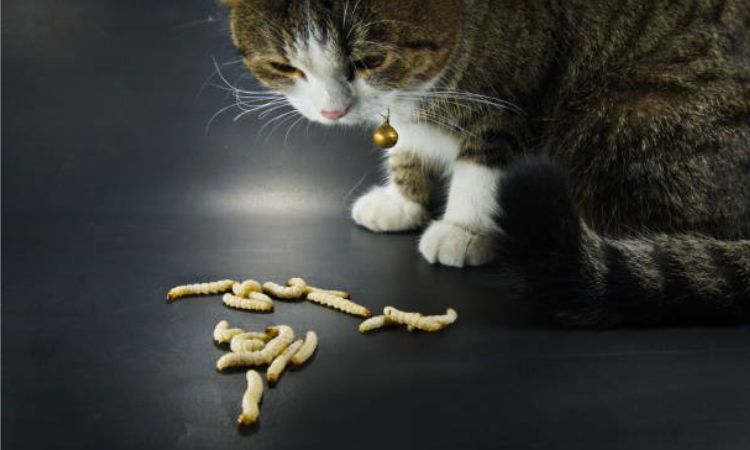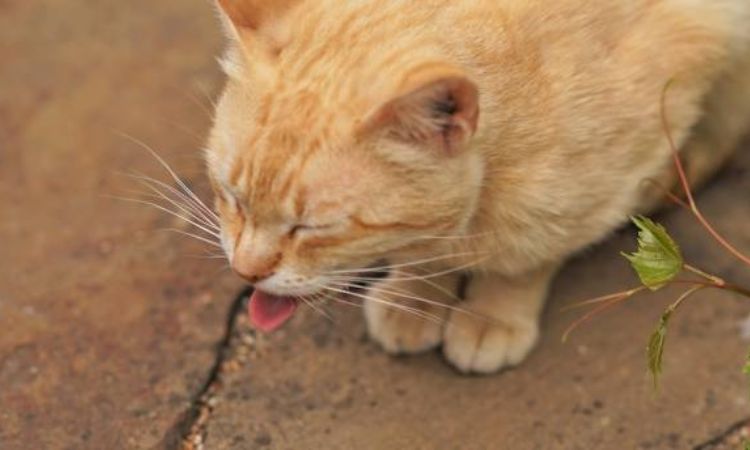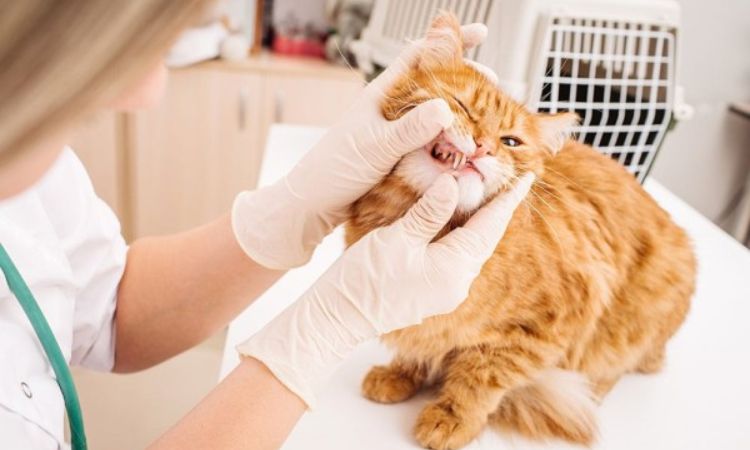If you’ve ever spotted your cat coughing up or even vomiting worms, it’s enough to make your stomach turn—and set off a wave of concern. Unfortunately, this isn’t as rare as you might think. Roundworms, one of the most widespread intestinal parasites, often find their way into both kittens and adult cats, with studies suggesting that nearly half of cats in the U.S. will encounter them at some point in their lives.

How Cats Get Roundworms
Roundworms can infect cats through several routes, making prevention an important part of their health care. The most common ways cats acquire these parasites include:
- From the Mother: Kittens are highly susceptible to roundworm infection through their mother’s milk. If the queen (mother cat) is infected, larvae can be transmitted to nursing kittens, often before they are even exposed to the environment.
- Eating Infected Prey: Cats that hunt are at risk of infection by consuming rodents, birds, or insects carrying immature roundworms (larvae). These prey animals act as “transport hosts,” allowing the parasite to complete its lifecycle once ingested by the cat.
- Ingesting Eggs from Contaminated Environments: Roundworm eggs can survive in soil, litter boxes, or even on contaminated food. Cats can ingest these eggs while grooming themselves, exploring outdoor areas, or eating food that has come into contact with infected feces.
- Rare Transmission Through Grooming: Although less common, roundworm infection can occur when a cat grooms itself after coming into contact with contaminated surfaces, soil, or fecal matter.
By understanding these transmission routes, cat owners can take steps such as keeping kittens indoors, practicing good hygiene, and implementing regular deworming schedules to minimize infection risk.
Symptoms of Roundworm Infection in Cats
Roundworm infections can affect cats of any age, but kittens are especially vulnerable. Common signs to watch for include:
- Visible worms in vomit or feces – long, spaghetti-like worms may be present.
- Digestive issues – such as diarrhea, constipation, or irregular bowel movements.
- Bloated or pot-bellied appearance – most noticeable in kittens with heavy infestations.
- Unexplained weight loss – even when your cat maintains a normal appetite.
- Poor coat condition – fur may appear dull, rough, or lack its usual shine.
- Lethargy and stunted growth – kittens may seem weaker, less playful, or fail to grow at a healthy rate.

What to Do If Your Cat Is Vomiting Worms
1. Stay Calm, But Take the Situation Seriously
While roundworms are a common internal parasite among cats, seeing them expelled can be distressing. Understand that your cat needs professional care, but avoid panicking. Staying calm helps you act efficiently and reduces stress for your cat, which is already vulnerable due to infection. Recognizing the seriousness of the situation is crucial because untreated roundworm infections can lead to complications such as malnutrition, diarrhea, vomiting, slowed growth in kittens, and even intestinal blockages in severe cases.
2. Collect a Sample for the Veterinarian
Whenever possible, safely collect a sample of the vomit or stool containing the worms. Use gloves and place the sample in a clean container. This allows your veterinarian to:
- Identify the type of parasite (for example, Toxocara cati or Toxascaris leonina).
- Assess the severity of the infection.
- Determine the most effective deworming treatment and schedule.
Even if the worms are no longer present by the time of your visit, describing their appearance—white or light brown, long and spaghetti-like—is helpful for diagnosis.
3. Schedule a Veterinary Appointment Promptly
Call your veterinarian as soon as possible to arrange an appointment. The vet will:
- Perform a physical examination of your cat.
- Conduct fecal testing to detect worm eggs, which may not always be visible in stool.
- Recommend a suitable deworming medication and dosage based on your cat’s age, weight, and health status.
Early intervention is essential, particularly for kittens, as heavy worm infestations can stunt growth, reduce appetite, and cause a pot-bellied appearance. Your vet may also advise follow-up treatments to address migrating larvae that are not affected by a single round of deworming.
4. Take Steps to Prevent Further Exposure
Roundworms can spread easily in the environment, and eggs may persist in soil or litter long after feces have been cleaned. To prevent reinfection and reduce the risk to humans:
- Clean the litter box thoroughly and frequently, using gloves and disinfectant. Remove all visible feces immediately.
- Disinfect surrounding surfaces such as floors, bedding, and food bowls.
- Limit outdoor access if possible to prevent your cat from hunting rodents or insects that may carry larvae.
- Maintain strict hygiene, washing hands thoroughly after handling waste, litter, or contaminated soil.
- Educate family members, particularly children and pregnant women, to avoid contact with potentially contaminated areas.
5. Follow Up With Regular Deworming and Monitoring
Because roundworms have a complex lifecycle—including migrating larvae that may temporarily hide in organs or tissues—one treatment is rarely enough. Your veterinarian will typically recommend:
- A follow-up deworming several weeks after the initial treatment.
- Routine fecal examinations for kittens 2–4 times in the first year and 1–2 times annually for adult cats.
- Monthly preventive parasite control products to minimize the risk of new infections.
Regular monitoring and preventive care are key to keeping your cat free of roundworms and maintaining overall health.
6. Be Aware of Human Health Risks
Roundworms can pose a risk to humans, especially children and pregnant women. Eggs in contaminated soil or feces may accidentally be ingested, causing potential infection. To protect your household:
- Ensure all contact with litter or soil contaminated by pets is handled with gloves.
- Wash hands thoroughly after cleaning the litter box, gardening, or playing outdoors.
- Prevent children from playing in areas where cats may have defecated, such as sandboxes or yards.
By following these steps—staying calm, collecting samples, seeking veterinary care, cleaning your cat’s environment, maintaining regular deworming, and practicing hygiene—you can help your cat recover safely from a roundworm infection while minimizing the risk to other pets and humans.

Veterinary Diagnosis and Treatment
Diagnostic Methods
Veterinarians primarily rely on fecal flotation tests to detect roundworm eggs in a cat’s stool. These tests allow the vet to identify the specific parasite and assess the severity of infection. In some cases, worm identification from vomit or stool can also provide valuable information for proper treatment. Regular fecal testing is especially important for kittens, who are more susceptible to infection, and for adult cats during routine check-ups.
First-Line Treatment
Prescription deworming medications are the most effective way to eliminate roundworms. Common active ingredients include pyrantel pamoate, fenbendazole, selamectin, emodepside, and moxidectin. These medications paralyze or kill the worms, allowing them to pass from the intestines with the stool.
Treatment Protocols for Kittens vs. Adult Cats
- Kittens: Require frequent treatments, often starting at 3 weeks of age and repeated every 2 weeks until 9 weeks old, followed by monthly preventive treatment.
- Adult Cats: Typically need deworming 1–2 times per year, with follow-up treatments as needed, especially if new infections occur or larvae are migrating.
Importance of Follow-Up Treatments
Because roundworm larvae can migrate and encyst in various tissues, a single deworming dose may not remove all worms. Follow-up treatments ensure that newly matured worms in the intestines are eliminated, reducing the risk of reinfection and environmental contamination.
Why Over-the-Counter or Home Remedies Aren’t Reliable
Home remedies and many over-the-counter products often fail to fully eliminate roundworms, especially migrating larvae. They may provide temporary relief but do not prevent reinfection or eliminate all developmental stages. Prescription medications administered under veterinary guidance remain the safest and most effective method for complete parasite control.

Home Care and Cleaning After Roundworms
- Dispose safely: Use gloves to throw away vomit or stool in a sealed bag.
- Clean thoroughly: Wash contaminated surfaces with hot water and disinfectant.
- Maintain litter box hygiene: Scoop daily and disinfect regularly to prevent reinfection.
- Wash belongings: Clean bedding, toys, and food bowls frequently with hot water and disinfectant.
Dealing with roundworms is never fun, but with the right information and a quick trip to the vet, you can get your cat on the path to recovery. Catching the problem early is key, so keep a close eye on your cat’s health. With a little preventative care and a proactive approach, you can ensure your furry friend stays happy, healthy, and worm-free.






